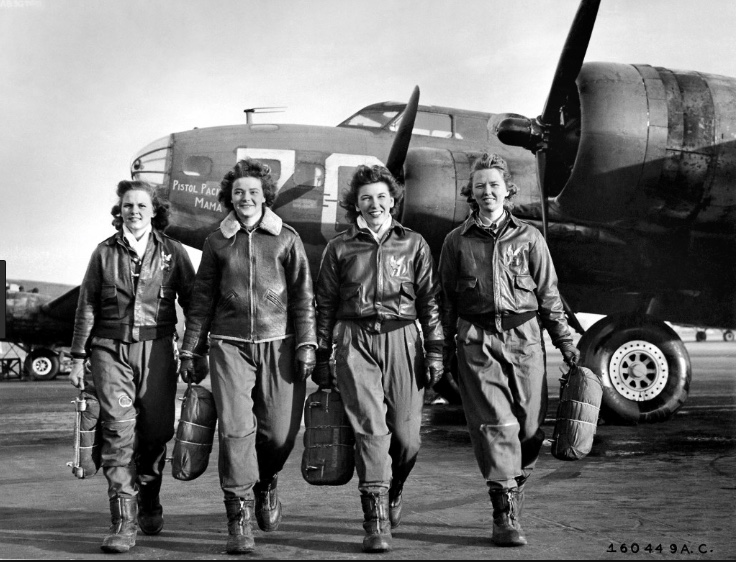Between 1940 and 1945, the female percentage of the U.S. workforce increased from 27 percent to nearly 37 percent, and by 1945 nearly one of every four married women worked outside the home. THey came from all backgrounds; diverse in race, ethnicity, and economics.
Despite doing the jobs previously held by men, women rarely earned even 50% of the wages of those males.
While women’s employment was encouraged during the war, once the war ended in 1945, federal and civilian policies replaced the women in the workplace. With the men returning from the military, the women were expected to give up their jobs. This is despite the fact that surveys from the Women’s Bureau reported that 75 percent of women were planning to continue their work post-war. In manufacturing specifically, this number jumped to 84 percent of women. Nonetheless, the work done by the women on the home front during the war opened doors for women across the workforce, and had a profound effect on women in the job market from the war going forward. As a result of their commitment, the women on the home front opened many occupations to women that had previously been deemed to be “men’s work.”
HUMAN COMPUTERS
Betty Jennings and Frances Bilas operating ENIAC’s main control panel
“In 1942, when computers were human and women were underestimated, a group of female mathematicians helped win a war and usher in the modern computer age.” During WWII these women spent 24 hours a day, six days a week working on secret ballistics research creating information used for location bombing of Axis Europe and the assaults on Japanese strongholds that were instrumental in the war’s success.
Computer History Museum
Hiring and Training
As you see above, men were so unaccustomed to having women in the workforce that many guides and educational videos were used to support them, such as this one from the United States Office of Education Training Film.
code girls
National Archives
More than 10,000 women worked as code breakers during WWII, many of whom were civilians. It has only been in the last few years that the work and significant codebreaking of these women has come to light.
building Planes and bombers
Before WWII, Lockheed had only five women on its factory payroll. However by the fall of 1942, the aircraft industry had added 63,000 women employees. By November of 1943, that number increased to 486,000, accounting for nearly 37 percent of the industry's labor force.
Women Airforce Service Pilots (WASP), "Fly Girls"
National Archives
In 1942, the United States faced a severe shortage of pilots. To address this shortage, women were trained to fly military aircraft so male pilots could leave for combat duty overseas. Women flew planes from factories to bases, transported cargo and participated in simulation strafing and target missions. More than 1,100 female civilian volunteers flew nearly every type of military aircraft as part of the WASP program. It wasn't until the 1970s that these women were given military status, and just last year they were given the Congressional Gold Medal. They are yet another example of civilian women who worked on the home front and were crucial to the war efforts.
Women shipyard workers welding the hull of DE-279 in 1943. This Evarts class destroyer escort would be transferred to the British Royal Navy and commissioned as HMS Kempthorne as part of the critical Lend-Lease program to support American allies during the war.
BOSTS 14958
www.nps.gov
other jobs
butcher taxi driver railroad tender forest fire fighter whistle punk aerodynamic engineer keel welder riveter ticket taker mechanic cargo loader airline checker flame cutter metallurgical observer labourer welder blacksmith’s helper flame burner core maker scraper scarfer pan man crane operator tool machinist electrical helper grinder oiler coil taper foundry helper checker loader cleaning worker maintenance worker flash welder ship fitter chipper psychiatrist driver supervisor tinsmith pipe fitter chemist surveyor attorney messenger scaler draftsman consultant ordnance worker astronomer motorman mathematician bus driver milkman postman fireman street cleaner traffic cop lumberjack telegraph operator steam hammer operator radio engineer electrical engineer geologist meteorologist shell assembler architect flagpole painter junk sorter garbage collector scientist conductor baggage man drawbridge tender crossing flagman electrician stomach scrubber belly grader sweetbread puller vein pumper
All funding for this commemorative work must be raised using private donations to the foundation; no government funds may be used (Commemorative Works Act.)









